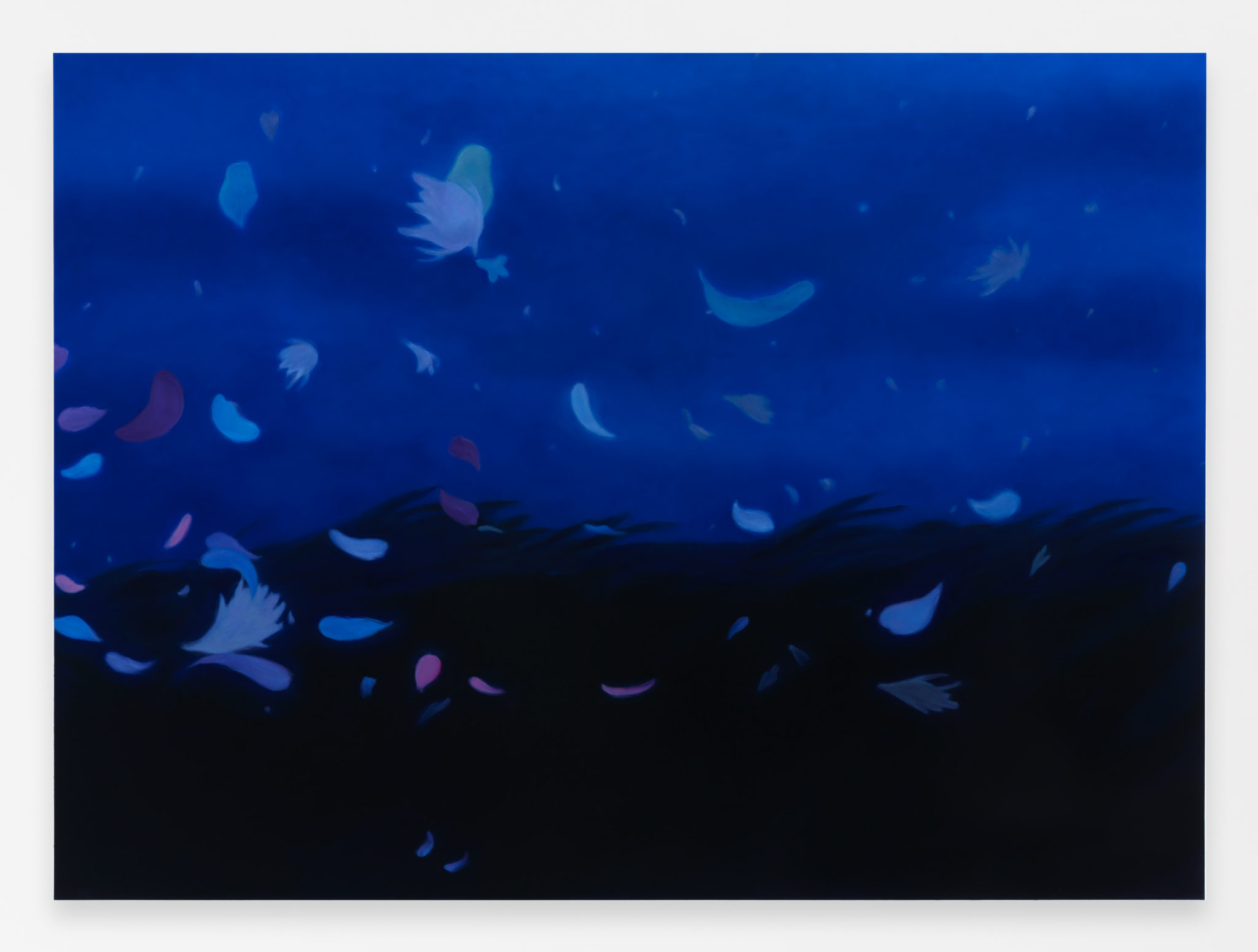Dan Colen | Mother (Moonlight Leaves)
Mother (Moonlight Leaves)
2018
Oil on canvas
53 x 72 x 2 inches (134.6 x 182.9 x 5.1 cm)
©Dan Colen
Photo: Christopher Burke
Love is a song that never ends
Life may be swift and fleeting
Hope may die
Yet love’s beautiful music
Comes each day like the dawn
Love is a song that never ends
One simple theme repeating
Like the voice of a heavenly choir
Love’s sweet music flows on
Like the voice of a heavenly choir
Love’s sweet music flows on
– theme from Walt Disney’s Bambi (1942)
Dan Colen began his Mother series in 2008, taking stills from animated Disney films as his source imagery and then replicating their compositions in traditional oil-on-canvas works. When selecting the stills for his series, the artist is careful to choose images that bear no recognizable traces of characters or narrative cues, instead focusing on stills that function as backdrops to the scene. Many of the Mother paintings, including the present work, reference the hand-drawn scenery from Walt Disney’s Bambi (1942). The film’s drama centers on the loss of the protagonist’s mother, whose presence is eventually reconstituted in the form of his lover. Steeped in melodrama, the Mother series presents a set of anonymous images against which the viewer may project their individual responses while exploring the ubiquitous experiences of grief and desire. Expanded here to suggest the heroic and existential nature studies championed by the Romantics, Mother succinctly conflates multiple thematic binaries.
Formally, many of the Mother works evoke a womb or cavity, emphasizing the themes of life and reproduction established by the dramatic arc of the film. The present work, however, focuses on the abiding processes of development and decay that comprise the various stages of life. Part of a transition shot that segues into the final act of the film, the cell replicated by the present Mother painting marks the transition from a scene in which the adolescent Bambi courts his childhood friend Faline, who is likewise on the cusp of adulthood. By this point in the story, Bambi’s mother has been killed by a hunter (referred to as “man” by the forest animals) in the late weeks of the winter, just before spring blooms. With the change of season, Bambi is shown to have sprouted a pair of antlers, which leads into a playful scene in which the animals discover they have also developed romantic feelings toward the female members of their species. The cell of the present work concludes the scene where Bambi and Faline frolic together in the forest; a gust of wind carries a scattering of leaves across the frame, emphasizing the passage of time. This transition leads into a climactic scene wherein the hunters return, and a forest fire is sparked by their campsite. In a Bildungsroman arc, Bambi is required to save Faline from a pack of hunting dogs while the other forest animals flee the fire. The final scene of the film reveals that Bambi has grown into a stag and fathered two fawns by Faline, bringing the cycle of life and death full circle. The image selected here thus not only invokes the eternal progression of time, but also signals the biological maturation of the story’s protagonist. Scaled to be in proportion to the viewer, Mother (Moonlit leaves) provides a dreamy backdrop against which we may reflect our own experience.

